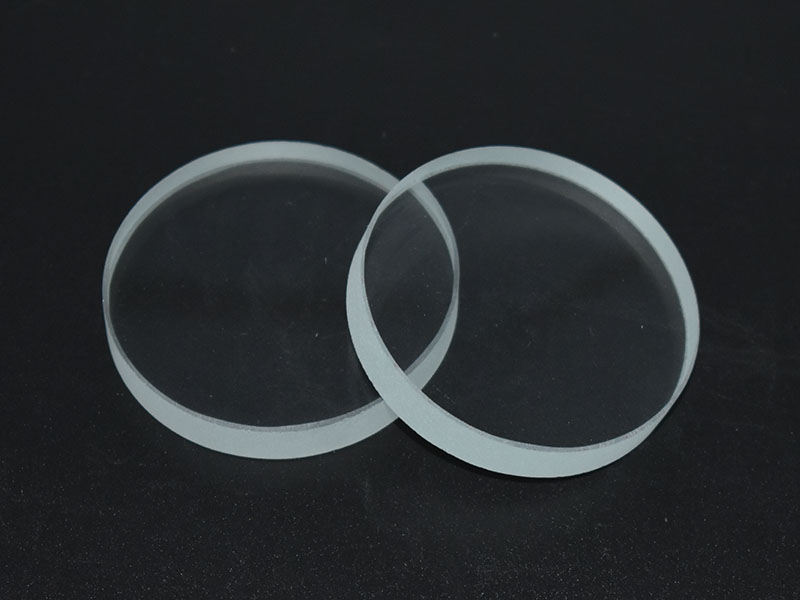Characteristics and Causes of Fringes in Glass
Click:
-Time:2022-06-11 15:20
Stripe characteristics: after the glass is annealed, linear and strip-shaped optical deformation can be found on the glass surface through observation. Fringes, also known as glass bars, can be divided into fine bars and coarse bars according to the size of the fringes. The thin bar is in bright linear shape, with a width of < 2mm, and has a relatively obvious boundary with the glass. Generally, it can be observed at an incident angle of 90 °; Fine bars with indistinct boundary can only be observed at an incident angle of < 90 °. When the thick bar stands 1~2m away from the glass product, the deformation zone different from the glass substrate can be seen at the 90 ° incident angle.


Causes of stripes:
1. The fringes formed due to uneven batch or wrong weighing can form fringes rich in silicon dioxide and deficient in silicon dioxide in soda lime silica glass, or fringes rich in aluminum oxide and deficient in aluminum oxide, and sometimes fringes rich in calcium, magnesium and alkali.
2. Due to the evaporation of volatile substances (including alkali) in the glass melt, the content of silicon dioxide on the surface of the glass melt increases, and silicon rich stripes will be formed.
3. The pool wall of the melting part of the furnace and other refractory materials in contact with the liquid glass interact with the liquid glass to produce high viscosity glass phase into the main glass and form stripes.
4. The fringes on the upper part of the furnace mainly come from silicon bricks. The silicon bricks at the arch are eroded by flying sodium oxide to form arch drops, which fall into the liquid glass to form silicon dioxide rich fringes.
5. The fringes formed by crystallization and the interaction between the "stone" and the surrounding liquid are both related to the shift of solubility equilibrium. If the dissolution reaction proceeds in the direction of dissolution, stripes may be formed in the melt.
6. The broken glass used has refractory stone defects, or the broken glass blocks are too large and unevenly added, which will cause local chemical unevenness of the glass melt and form stripes.
7. The oxidation-reduction atmosphere in the furnace changes, which changes the valence state of multivalent coloring elements and forms a color track (commonly known as color track).
8. The fringes caused by thermal inhomogeneity are a kind of physical fringes. When the uniform glass melt is overheated or supercooled, the parts with higher density and lower density will appear. It is different from the basic refractive index of glass, thus forming stripes.
9. The fringes caused by mechanical unevenness are also a kind of physical fringes. Due to improper stirring speed and depth, or different stirring methods, uneven bodies are produced in the glass melt and stripes are formed.
If you are interested in the or need to consult, please call us +8613343800331.Pan Chao special industrial glass, Customize your persoalised glass products.
Welcome sending your inquiry: Phone :+8613343800331 Email: sales@panchaoglass.com
If you are interested in the or need to consult, please call us +8613343800331.Pan Chao special industrial glass, Customize your persoalised glass products.
Welcome sending your inquiry: Phone :+8613343800331 Email: sales@panchaoglass.com
Related articles
- Classification of Pressure Resistant Glass
- Price of High Temperature Resistant Glass
- What Is the High Temperature Resistance of High Temperature R
- Characteristics and Application of Glass Mirrors
Recommend
- Classification of Pressure Resistant Glass
- Characteristics and Causes of Fringes in Glass
- Physical and chemical changes of heat resistant glass during
- Elimination of Bubbles in Mirror Glass
- Price of High Temperature Resistant Glass
- Precautions for Use of Glass Mirrors
- What Is the High Temperature Resistance of High Temperature R
- Factors affecting Glass Density
- Characteristics and Application of Glass Mirrors
- Characteristics of High Pressure Resistant Glass
Rank
- Application of high temperature resistant glass
- Precautions in the process of quartz tube cutting and picklin
- ultra-thick tempered sight glass for submarine
- What are the advantages and disadvantages of quartz tube heat
- The process of toughening of borosilicate tempered sight glas
- Where is high pressure resistant glass used?
- Introduction of elliptical quartz tube and oval quartz tube
- Introduction to the Characteristics of Quartz Glass Tube 1
- High temperature boiler sight glass for boiler
- Introduction to cold working process of quartz glass
Latest articles
- Classification of Pressure Resistant Glass
- Characteristics and Causes of Fringes in Glass
- Physical and chemical changes of heat resistant glass during
- Elimination of Bubbles in Mirror Glass
- Price of High Temperature Resistant Glass
- Precautions for Use of Glass Mirrors
- What Is the High Temperature Resistance of High Temperature R
- Factors affecting Glass Density
- Characteristics and Application of Glass Mirrors
- Characteristics of High Pressure Resistant Glass

